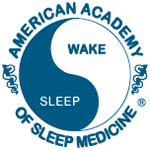Today a new generation meets the boogeyman for the first time. The remake of “Nightmare on Elm Street” is now open in theaters nationwide.
The movie is getting panned by most major critics. This blogger recommends instead checking out the 1984 original, or the self-aware follow-up "Wes Craven’s New Nightmare," where Freddy haunts the actors and crew behind the first film.
The franchise is about a child murderer who was burned alive by a mob of angry parents and returns to haunt their teenage children in their dreams.

Director Wes Craven reportedly came up with the premise after reading in the news about a group of young Cambodian refugees who, haunted by terrifying nightmares, refused to sleep. The group had escaped the countries genocidal Khmer Rouge regime, only to face those same fears in their dreams while safe in America. This is where it gets chilling -when they gave in and returned to sleep, they died.
Craven described his reaction to the article he read in the Los Angeles Times:
In the middle of the night they heard these horrendous screams and crashings and they ran in and he’s thrashing on the bed. They ran to him and by the time they got to him he was dead. They did an autopsy on him and there was nothing physically wrong with him. And I just thought: “My God.”
Researchers believe the deaths were caused by a mysterious disorder called sudden unexplained death nocturnal syndrome. Otherwise healthy men from Southeast Asian countries ages 20 to 45 years old suddenly die in their sleep.
Some in Thailand and the Philippines believe the incidents are supernatural. A spirit comes to kill them by sitting on their chests while they sleep. This belief is not unlike the “Nightmare on Elm Street” antagonist. To avoid the spectral threat, some Thai men would disguise themselves as women.
Though researchers have offered a variety of hypothesis over the last few decades, none have held up. Many have not been disproven either. Relatives of some of the victims describe hearing a sudden gasp for air, before they died.
In “Nightmare on Elm Street,” the victims tried to stay awake to avoid Freddy Krueger’s nightmare assaults. Coming up Sunday morning on the blog, find out what doctors say they should have done instead.
Image courtesy New Line Cinema


 The title and description might make your stomach churn. Floppy eyelid syndrome causes your upper eyelids to become rubbery and turn inside-out spontaneously while you sleep.
The title and description might make your stomach churn. Floppy eyelid syndrome causes your upper eyelids to become rubbery and turn inside-out spontaneously while you sleep.

















